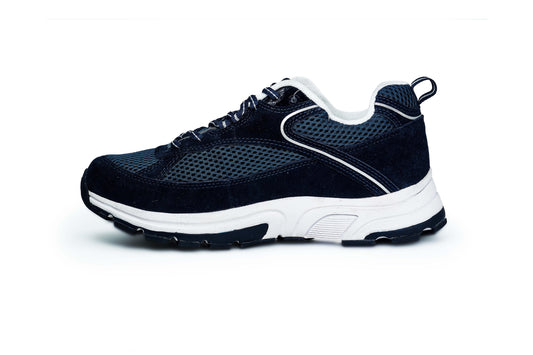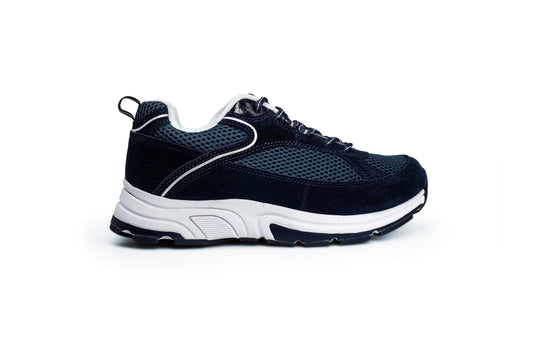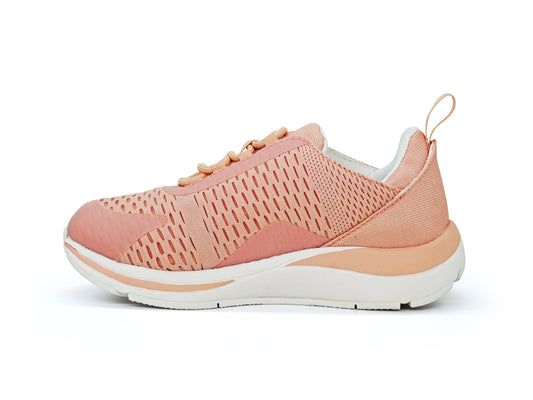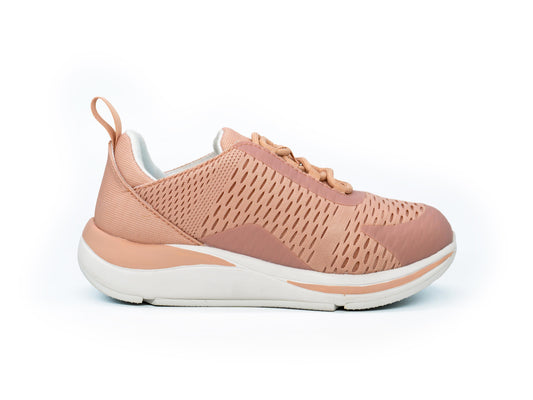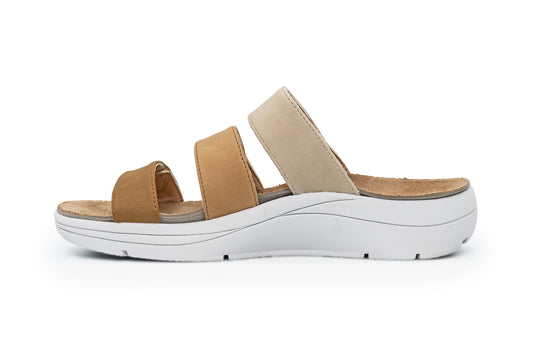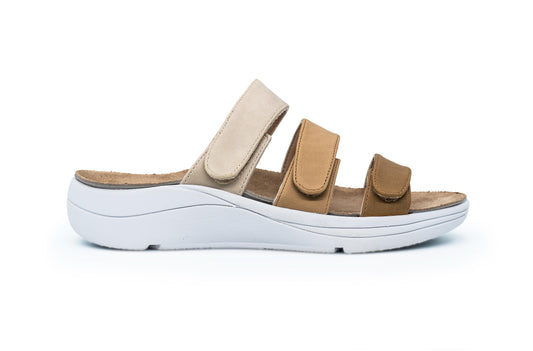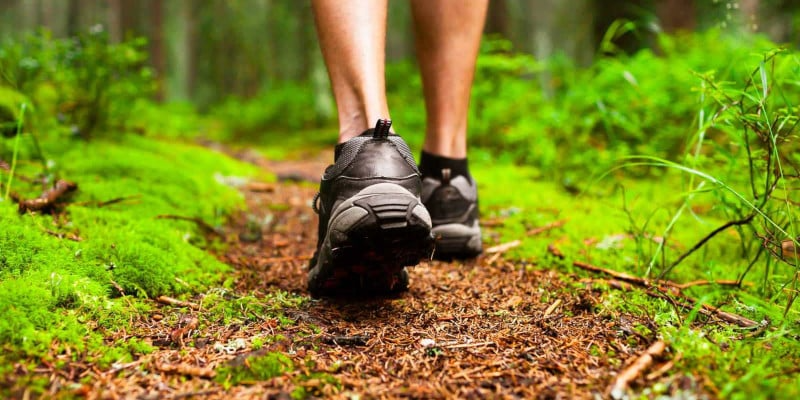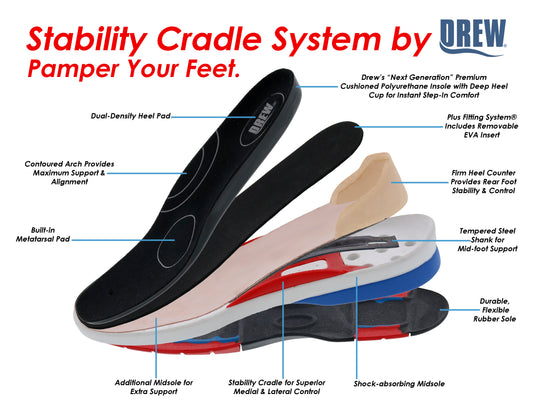HOW TO CHOOSE THE RIGHT DIABETIC SHOES FOR HIKING AND OUTDOOR ACTIVITIES?
Hiking and other outdoor activities are excellent ways to stay active, enjoy nature, and improve overall health. For those living with diabetes, maintaining an active lifestyle is important, but it also needs to be done in a way that takes into consideration foot health. Foot complications associated with diabetes, such as poor circulation, neuropathy (nerve damage), and slower wound healing, can make it difficult to enjoy outdoor activities. This being said, appropriate footwear makes the difference in safe and comfortable hiking and outdoor excursions for diabetic individuals. Diabetic hiking and outdoor activity shoes may serve to mitigate those risks.
This article will guide you in selecting the right hiking footwear for people with diabetes. We'll cover the essential features to consider and how to match them to your needs, ensuring healthy feet while enjoying the great outdoors.
Prioritize fit:
The first and most critical factor when choosing diabetic shoes for hiking or outdoor activities is proper fit. Poorly fitting shoes can cause blisters, calluses, and even ulcers, especially for individuals with diabetes who may have reduced sensation in their feet due to neuropathy. A shoe that's too tight can restrict circulation and increase the risk of developing sores, while shoes that are too loose can cause rubbing and friction, leading to foot damage.
In selecting your hiking shoes, here are several considerations in mind:

- Toe Box: The toe box should be just wide enough not to crimp the toes about. This does not only stop toe deformity but can produce blisters, and pressure sores.
- Heel Fit: The heel must be snug-fitting so as not to slip and cause friction that leads to blisters. It should not be too tight, though, because this would cause discomfort and restriction of circulation.
-
Adjustability: This type of shoe features adjustable closures: Velcro straps, laces, or buckles. An adjustable closure would allow you to fit the shoes according to the shape of your foot. Such is important, especially for individuals with diabetes as their foot sizes can change when swelling occurs in this part of their body.
Look for ample cushioning and shock absorption.
Long treks or outdoor adventures are often taken on uneven and rugged terrain that may stress the feet, joints, and muscles. The impact is therefore softened by cushioning and shock absorption to prevent the foot and lower limbs from pain and injury.
The diabetic shoes for hiking should have:

- Cushioned Insoles: The shoe should have soft, supportive insoles that cushion the shock of walking and provide comfort when walking long distances. Memory foam or gel insoles are good options because they mold to the shape of the foot, offering personalized support.
- Thick, shock-absorbing soles: The sole of the shoe should be thick and flexible enough to absorb the impact of walking on hard surfaces, such as rocky trails or uneven ground. A durable, cushioned sole reduces stress on the feet and joints, making hiking more comfortable.
- Ensure adequate arch support: For diabetic people, proper arch support is crucial since it allows for the distribution of body weight over the feet with no strain at pressure points. No arch support might cause plantar fasciitis, fallen arches, or even overpronation, leading to foot pain and gait deviation while doing outdoor activities.
The following are factors to consider in the selection of hiking shoes:

-
Built-in arch support: Most diabetic hiking shoes are made with built-in arch support that will help make sure your foot is well aligned for comfort and less pain, especially during long hikes.
-
Removable Insoles: Some diabetic shoes offer removable insoles, so you can replace them with custom orthotics or insoles that provide extra arch support if needed. This way, you are assured of getting the level of support and comfort tailored to your specific foot needs.
Consider breathability and moisture-wicking properties.
Hiking and outdoor activities often involve prolonged exposure to heat, sweat, and moisture. For people with diabetes, it is especially important to keep the feet dry because moisture can lead to fungal infections, blisters, or other skin problems. Shoes that trap moisture or don't allow air circulation can contribute to these issues, which can be problematic for diabetic individuals due to their slower healing times.
Keep the feet dry and comfortable with the following:
-
Breathable Materials: Try shoes that are made from breathable materials like mesh or leather, allowing air to pass through and keeping feet cool. The breathable shoe prevents excessive sweating and moisture build-up around the feet. The feet, therefore, will stay dry throughout long hikes.
-
Moisture-wicking linings: Diabetic hiking shoes have moisture-wicking linings that absorb sweat and draw it away from the feet, preventing moisture from building up inside the shoe. This is particularly useful in preventing blisters and fungal infections.
- Check for seamless construction to prevent friction: Diabetic shoes are often made with seamless interiors or smooth stitching to reduce friction against the foot. For diabetics, even the smallest friction points can cause blisters, calluses, or ulcers that are harder to heal.
When choosing hiking shoes, look for:
-
Seamless or Soft Lining: Hiking shoes with smooth interiors or no seams help prevent irritation and rubbing, reducing the risk of skin breakdown.
-
Padded Uppers: The shoes with padded uppers or collars give additional comfort and prevent chafing around the ankles, which is very important for long walks.
The right diabetic shoes for hiking and outdoor activities are very crucial in maintaining healthy feet and engaging in these activities without discomfort or injury. To choose the appropriate shoes, look for proper fit, cushioning, arch support, breathability, durability, and seamless construction. Hiking diabetic shoes has helped eliminate the risk factor of diabetes neuropathy and circulatory issues so that you can participate in active physical exercise safely. Having the right footwear in place will always make you enjoy your time out in the great outdoors knowing your feet are in good care and protected.
Take the Next Step Towards Comfort and Care
Discover the perfect balance of support, style, and expert guidance for your feet. Explore our collection of orthopedic and diabetic shoes designed to keep you moving with ease.
Start your journey to happy, healthy feet today!
Visit us at DiabeticShoe for more tips, insights, and footwear solutions.
Stay Connected:
Follow us on Facebook, Instagram, YouTube, LinkedIn, Twitter, Pinterest, and Quora for updates, advice, and more informative content.

